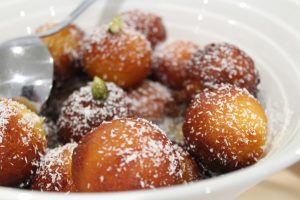Hello hungry peoples,
Today we are going to discuss a classic Indian dessert “Gulab Jamun”. The dish is ridiculously popular and has a history stretching back to medieval India, when Persian invaders shared the recipe over cups of tea. When they were not busy burning and pillaging of course. It is popular through-out Asia as a celebration dish, with a reach that has extended even to the Caribbean. Apparently they love it in Jamaica.
The dish comprises super soft spongy dumplings “Jamun”, soaked in a sugar syrup with nuts and dried fruits providing different flavours. The dumplings are traditionally made using Khoya (Mawa), which are milk solids made from freshly curdled milk. This is a common ingredient in Indian desserts and some Punjabi curries. It can be purchased commercially in India but even there some dishes require the Khoya to be fresh, so it is common for people to make it themselves at home. There are Gulab Jamun recipes that use milk powder instead, which changes the texture of the dumpling so it is less porous.
The khoya is kneaded into a dough, sometimes with a bit of flour. Once the dumplings are formed they are deep fried in ghee to produce texture. Lastly they are then soaked in sugar syrup (Gulab) which is flavoured with ingredients such as cardamon, rose water, kewra or saffron. This produces the sweetest, most indulgent little dumplings you will ever find.
You can buy Gulab Jamun from Sharda at Hometaste right now.
